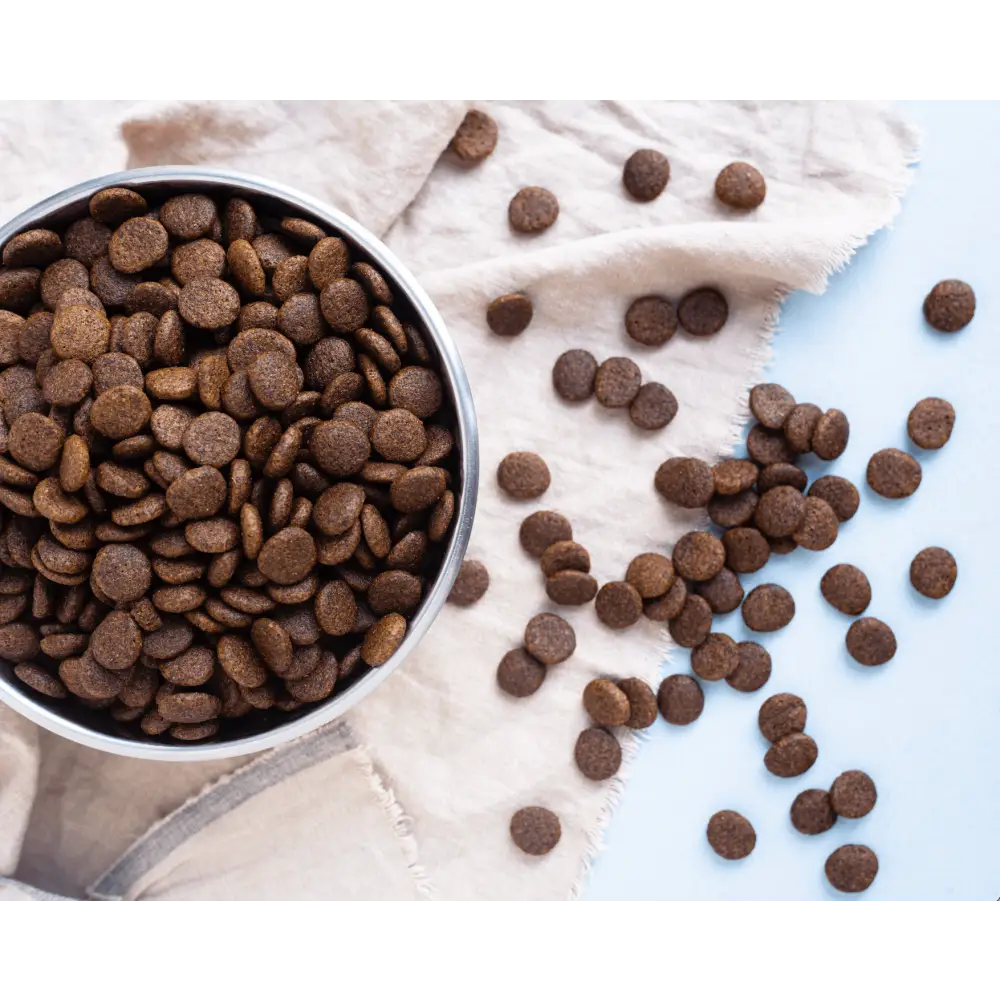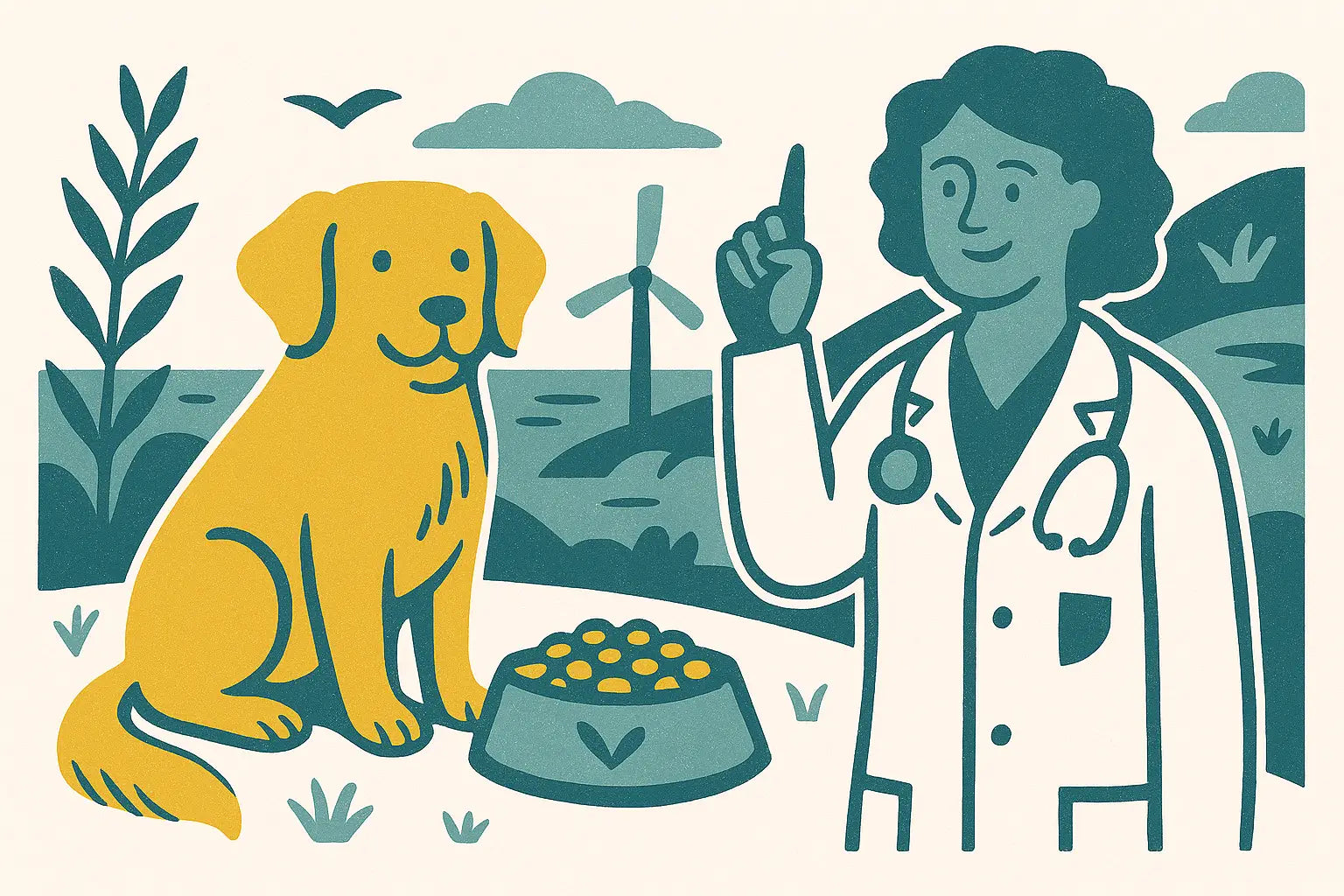Introduction
Grain-free dog food has become a buzzword in pet nutrition, promising meals closer to a dog’s natural ancestral diet. But is it truly better for your dog, or just clever marketing?
This guide explores the real benefits and myths of grain-free diets, how to switch safely, and vet-backed tips to keep your dog thriving.
What Grain-Free Dog Food Is
Grain-free dog food is made without common cereal grains (wheat, rice, barley, oats, maize). Instead, it uses alternatives such as:
-
Sweet potato or potato – natural sources of carbohydrates and fibre
-
Legumes (peas, lentils, chickpeas) – plant proteins and slow-release energy
-
Vegetables and fruits – rich in vitamins, minerals, and antioxidants
These recipes focus on high meat content and balanced nutrition, making them closer to what a dog’s digestive system is designed for.
Product suggestion: Aflora Grain Free range – high-meat, gently cooked recipes designed for everyday health.
Potential Health Benefits of Grain-Free Dog Food
Easier Digestion
Some dogs struggle with cereals, leading to bloating or loose stools. Grain-free foods avoid these triggers and use carbohydrates that are easier to digest.
Allergy & Sensitivity Support
Grains can sometimes contribute to skin irritation or chronic itching. Switching to grain-free may reduce these symptoms, especially when combined with single-protein natural dog food.
Skin and Coat Condition
High-quality grain-free recipes often feature omega-rich fish oils and meat proteins, promoting a glossy coat and healthy skin.
Internal product suggestion: Natural dog chews – a wholesome complement to a grain-free diet, keeping teeth clean and minds engaged.
Myths & Misconceptions
Myth 1: “Grain-Free Diets Cause Heart Disease”
A 2018 US study raised concerns about dilated cardiomyopathy (DCM) and boutique grain-free foods.
However, the issue was linked to unbalanced recipes lacking key amino acids, not to all grain-free diets.
Reputable UK brands meet strict FEDIAF nutritional guidelines and supplement essential nutrients such as taurine.
Myth 2: “Dogs Need Grains for Energy”
Dogs are omnivores and can obtain energy from a variety of sources, including vegetables and animal fats. Balanced grain-free foods supply plenty of slow-release carbohydrates.
Myth 3: “Grain-Free Means Low-Carb”
Not necessarily. Grain-free doesn’t mean carb-free—it simply means the carbs come from nutrient-rich sources like sweet potato or lentils rather than wheat or maise.
Transition Tips: Switching Safely
Changing food suddenly can upset your dog’s stomach.
Use a 7–10 day transition plan:
-
Days 1–3: 25% new food, 75% current food
-
Days 4–6: 50% new, 50% current
-
Days 7–10: 75% new, 25% current
-
Day 11 onwards: 100% grain-free food
Extra Tip: Keep fresh water available and introduce one new protein at a time to monitor sensitivities.
Internal product suggestion: Pair meals with Aflora training treats for positive reinforcement during the change.
Expert & Vet Tips for Feeding
-
Check the label: Look for named meats (e.g. “chicken 60%”) and clear nutritional analysis.
-
Maintain balance: Ensure the recipe is “complete” so it provides all essential vitamins and minerals.
-
Watch portion size: Grain-free diets can be calorie dense—follow feeding guidelines to prevent weight gain.
-
Support gut health: Add a natural probiotic or fermented vegetables for extra digestive support.
-
Mix textures: Combine dry and wet grain-free food to increase hydration and enjoyment.
Recommended Products and Related Reads
The Pets Larder offers trusted UK grain-free options:
-
Aflora Grain Free range – high-meat, naturally balanced meals
-
Natural dog chews – perfect for dental health and mental enrichment
-
Lily’s Kitchen grain-free recipes – wholesome wet and dry foods
Further learning:
FAQs
Q1: Is grain-free dog food suitable for puppies?
Yes, as long as it’s a complete and balanced puppy-specific formula. Always follow portion guidance for growth stages.
Q2: Will grain-free food stop my dog’s itching?
It can help if the itching is caused by grain sensitivity. If symptoms persist, consult a vet to rule out other allergies.
Q3: Can I mix grain-free with regular kibble?
You can, but do it gradually and monitor for stomach upsets. Mixing is a good way to introduce grain-free slowly.
Closing Call-to-Action
Grain-free dog food isn’t a trend—it’s a practical choice for many dogs with sensitivities or those simply needing a nutrient-rich, balanced diet.















